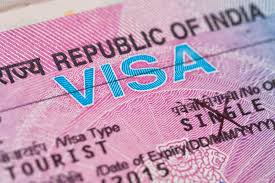Indian Visa Requirements for Children

Obtaining an Indian visa for children involves specific requirements and processes, whether you’re applying for a tourist visa, an e-visa, or another type. Understanding these requirements, including the necessary documentation and procedures, is crucial for a smooth application process. This guide will walk you through the key aspects of obtaining an Indian visa for children, from eligibility criteria to document requirements and application steps. INDIAN VISA REQUIREMENTS FOR CHILDREN
Understanding Visa Types for Children
Before applying for an Indian visa for children, it’s essential to know the types of visas available:
Tourist Visa
A tourist visa is typically the most common visa type for children traveling with their families for leisure or sightseeing purposes. This visa is usually valid for a short duration and allows for single or multiple entries into India.
E-Visa
The e-visa is an electronic visa that can be obtained online. It is suitable for various purposes, including tourism, medical visits, and business trips. The e-visa process is relatively straightforward and convenient for many travelers.
Student Visa
If a child is traveling to India for educational purposes, a student visa might be required. This visa is generally issued for a longer duration and requires proof of enrollment in an educational institution.
Key Requirements for Indian Visas for Children
Passport
A valid passport is a fundamental requirement for any visa application. For children, the passport must be:
- Valid for at least six months beyond the date of entry into India.
- Have at least two blank pages for visa stamps.
Visa Application Form
The application form must be completed accurately. For children, the form should be filled out by a parent or guardian. The application should include:
- Personal details of the child.
- Details of the parent or guardian completing the form.
Passport-Sized Photographs
Recent passport-sized photographs are required. These should:
- Be in color and taken against a white background.
- Measure 2×2 inches (51×51 mm).
- Show the child’s face clearly, with no shadows or reflections.
Birth Certificate
A birth certificate is required to establish the relationship between the child and the parent or guardian. The certificate should:
- Be a certified copy in English.
- Include the child’s full name, date of birth, and parent’s names.
Parental Consent
For minors traveling alone or with someone other than their parents, a consent letter from the parents or legal guardians is necessary. This letter should:
- State the purpose of the visit.
- Include the names and contact details of the accompanying person.
Proof of Travel Arrangements
Proof of travel arrangements includes: INDIAN VISA FOR JAPANESE PASSPORT HOLDERS
- Flight tickets to and from India.
- Hotel reservations or an invitation letter from a host in India.
Proof of Financial Means
You may need to provide evidence that the parent or guardian can financially support the child during the stay. This can be shown through:
- Bank statements.
- Pay stubs.
Application Process for Indian Visas for Children
Online Application
For e-visas, the application process is online. Follow these steps:
- Visit the Indian e-Visa Website: Go to the official website for e-visa applications.
- Fill Out the Application Form: Enter the required details about the child and accompanying adults.
- Upload Documents: Upload the necessary documents, including the passport photo, birth certificate, and travel proof.
- Pay the Fee: Complete the payment for the visa processing fee.
- Receive the e-Visa: Once approved, the e-visa will be sent via email.
Traditional Visa Application
For traditional visa applications, the process involves visiting the Indian embassy or consulate. Here’s how to proceed:
- Prepare Documents: Gather all necessary documents, including the completed visa application form.
- Submit Application: Submit the documents in person or via a visa service center.
- Attend an Interview: An interview may be required, although this is less common for children.
- Receive Visa: Once processed, the visa will be stamped in the child’s passport.
Important Considerations
Visa Processing Time
Visa processing times can vary based on the type of visa and the applicant’s nationality. Typically, e-visas are processed within a few days, while traditional visas may take longer.
Travel Insurance
It is advisable to have travel insurance for children traveling to India. This can cover medical emergencies, trip cancellations, and other unforeseen issues.
Health Precautions
Ensure that the child is up-to-date on vaccinations and carries any necessary medications. Check the latest health advisories for travelers to India.
Conclusion
Obtaining an Indian visa for children involves several important steps and documentation requirements. By understanding these requirements and following the appropriate procedures, you can ensure a smooth and successful visa application process. Whether applying for a tourist visa, e-visa, or student visa, careful preparation and adherence to guidelines will help facilitate your child’s travel to India.
